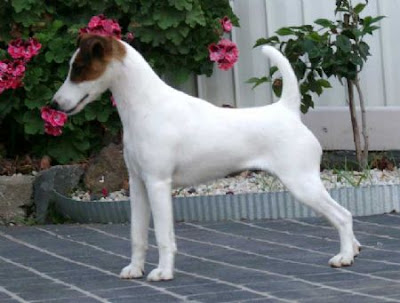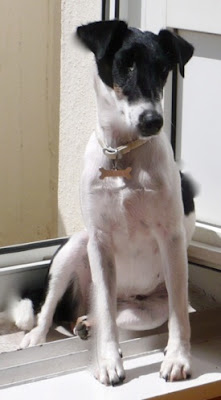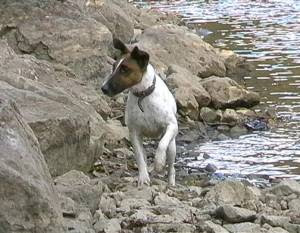One cool summer evening several years ago, I was sitting in a snug little English cottage listening to an old Fox Terrier, a man who has been the power behind the throne in several famous kennels, tell anecdotes about past celebrities, both canine and human. Once or twice the name of a dog would slip away from him, Each time this happened he would be mightily embarrassed, for it touched his pride; and he would say apologetically, "You see, sir, there's been so many good 'uns, they're like the Smiths." He was quite right, and the more one delves into the Smooth Fox Terriers voluminous records, the easier writing a genealogy of the Smith family seems to be.
Although far from the most ancient of breeds, this lack of age is easily made up by the wealth of material. The overwhelming popularity of the variety has naturally resulted in so many great show cracks and so many famous strains that anything like a complete history of the Fox Terrier would be a book of enormous bulk. It is both interesting and useful, however, for a fancier to know something of the history of the various breeds especially the one which he is breeding and exhibiting and while space does not allow a full and complete record, still we can sketch the more important developments in the evolution of the Smooth Fox Terrier.
The best authorities differ considerably in their theories of the breed's origin. On the other hand, those unfamiliar with terrier lore usually hold the belief that the Fox Terrier is the original member of the terrier family. Nothing could be further from the truth. The original terrier stock was wire, not smooth-coated, and was black and tan in England and grizzle or reddish in the Border Countries and Lowlands. The original short-coated terrier was the black and tan Manchester Terrier, or at least his short-headed, more chubby ancestors. He antedates the Smooth Fox Terrier many years, and indeed was a factor in his creation.
Every once in a while, we come upon references to a white terrier similar to the black and tan one, but we read of him only in comparatively recent books and we do not see him in sporting paintings or engravings of a century or more ago. Of course, there is the old White English Terrier, but he is a different story, and we know that he came later and from a Whippet cross. I have a suspicion that some Fox Terrier historians have worked from to-day backwards and invented this white smooth dog to account for the Fox Terrier we know. Certainly white plus black and tan terriers of smooth jackets furnish a very simple and alluring explanation for the origin of the Smooth Fox Terrier. Its very simplicity is against it, for we do not usually find that new breeds are made by the simple addition of one and one.
The earliest record that we have of any white terrier with black markings is a dog called Pitch, owned about 1790 by Colonel Thornton. An engraving by Scott after an oil by Gilpin, which was probably painted from life, was published before 1810 with the following text: "It would be necessary to notice Colonel Thornton's terriers if it were only on account of his justly celebrated Pitch, from whom are descended most of the white terriers in the Kingdom."
Judging from this portrait, Pitch was about as near to fifty per cent Greyhound as a dog could be. He was a big, leggy dog, light in bone, with a longish back and considerable cut up. He seems to have had a nice head much more the head of to-day than some of the dogs of half a century after him with small, prick ears. If he were really the dog from whom "most of the white terriers in the Kingdom" came and this is possible, for he would probably be well advertised by his owner's sporting dogs and horses, which were greatly sought by wise breeders throughout England we can be pretty positive in the assertion that the Greyhound was an important contributor in the making of the Smooth Fox Terrier.
The Bulldog and the Beagle are also supposed to have been used by early breeders. If the Bulldog has had anything to do with it, I am of the opinion that it was through the Bull Terrier. Such cross-breeding could hardly have been done till after 1800, when the Bull Terrier first appeared.
Between Pitch and the middle of the last century is a mysterious gap in Fox Terrier history. We have some bits of broken records and plenty of rumors and traditions, but until 1860, when we can take up the thread and bring it down to to day without a break, there is not much that is definite. How very shaky the foundation for a pure bred strain was even in the sixties is shown by the fact that some of the illustrious dogs of that day had one black and tan parent, and some were half Bull Terrier, some half Pointer, and one is recorded as having had a Dalmatian dam. From 1870 till now we have, as I have said, a complete and perfect pedigree for the Smooth Fox Terrier. Three dogs, each famous, are the sources from which our most modern strains have come. They were Old Jock, Old Trap, and Old Tartar.















0 comments:
Post a Comment